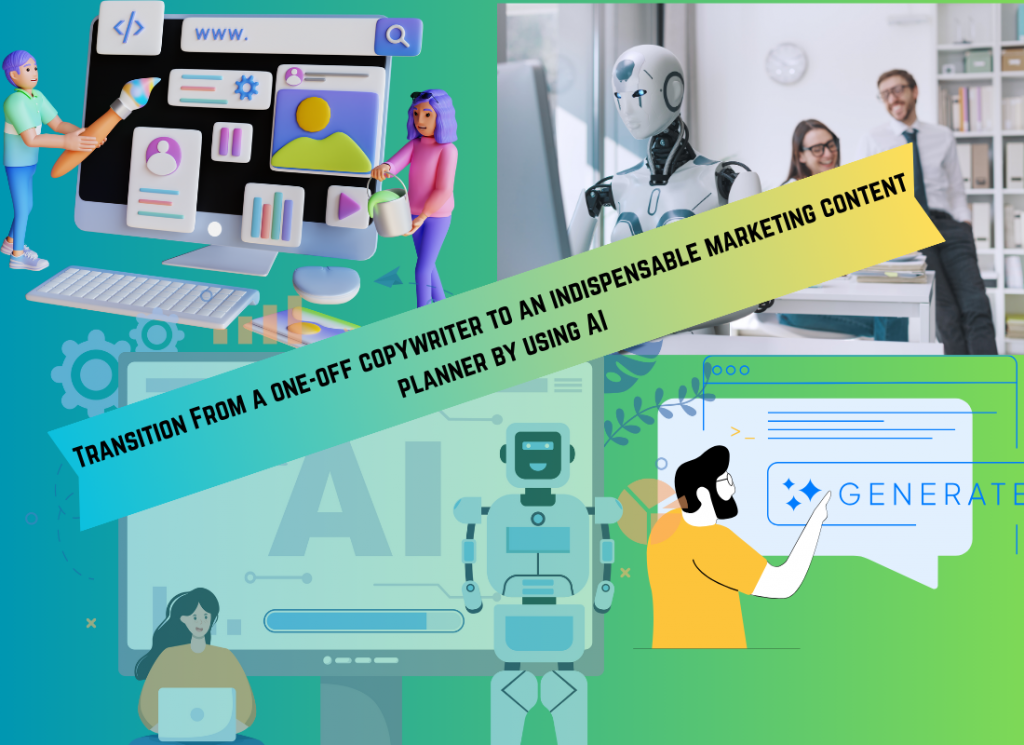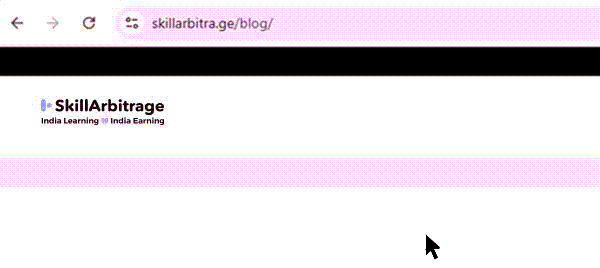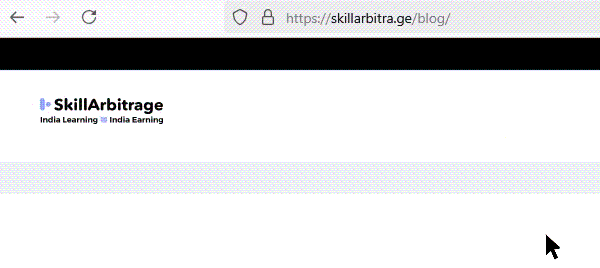This AI-powered guide is for Indian freelancers targeting US brands who want to elevate themselves from one-off copywriters to indispensable marketing content planners. We will explore strategies for embedding you into lifelong high-paying brand writing opportunities as strategic brand storytelling partners, using memory-optimization copywriting and content planning principles.
Table of Contents
Previously on Memory-Optimized Copywriting…
At 2 AM, desperate and losing customers, Ivan Ivanovich calls Parvathishankar – the master copywriter known for making brands unforgettable. Parvathishankar agrees to teach him nine AI-powered techniques to engrave messages into customers’ minds:
- Spaced Repetition and Interleaving
- Emotions and Storytelling
- Von Restorff Effect
- Zeigarnik Effect
- Elaborative Interrogation
- Multiple Touchpoints
- Behavioral Triggers
- Temporal Landmarks
- Modular Content
But Ivan isn’t the only one learning the difference between writing and strategy. Meet Raghunandan, Parvathishankar’s son.
(Continued…)
Introduction
“Father, father, see what I have got.” Raghunandan handed his phone to Parvathishankar. A notification from HDFC Bank showed a deposit of $1000 in his account.
“Impressive. Your first payment.” Parvathishankar nodded. “What was the project?”
“I wrote two blog posts for a premium fitness brand, father. They loved my work.”
“Ah.”
“You do not look pleased, father,” Raghunandan said, frowning.
“Well, are you?”
“Yes…? Am I missing something?”
Parvathishankar’s expression hardened. “Raghunandan Parvathishankar Dayanidhi Venkatanarasimhan Subramaniam Nair, I did not raise you to play for pennies. Did you upsell?”
“No, I was planning to pitch new clients with this as a sample.”
“Or, you could become a trusted brand storytelling partner for this brand and pitch to others not as a copywriter but as a copy strategist. Do you not want to make more than $500 per blog post?”
“Yes.”
Parvathishankar scoffed. “Looks to me like you want to be stuck chasing one-off gigs, competing with thousands of Indian freelancers all hunting for US clients, fighting for scraps every week.”
“What is wrong with that?” Raghunandan shot back. “$1000 is not bad for a week of work. Another brand will see my samples and hire me.”
“With AI churning out content faster than ever, how long do you think this will last? The brands that pay top dollar don’t need just writers anymore. They need strategists – people who make their message unforgettable. The ones who adapt will own the market. The ones who do not get replaced.”
Raghunandan hesitated. “How would I do that? I have no experience with such a thing.”
“You already know the answer.”
“I do?”
“Did you use memory-optimized copywriting techniques for these blogs?”
“Yes, of course.”
“Then you are already ahead of 90% of freelancers. But there is one last trick.
Raghunandan leaned in. “What is it?”
Parvathishankar smiled. “It is time you learned the final lesson. The one that separates a writer from a strategist.”
The 10th principle
As was his habit, Parvathishankar poured himself a cup of tea before beginning the lesson.
Raghunandan waited, curiosity building. His father never rushed into explanations. He let the moment settle as if allowing the lesson to take shape in the air before speaking it aloud.
At last, Parvathishankar said, “The nine memory-retention principles ensure your words stay with the reader. But the tenth principle? That ensures you stay with the brand.”
Raghunandan leaned forward. “And what is that principle?”
“Positioning.”
“Positioning?”
“Yes. The difference between a copywriter and a copy consultant is not just in the quality of their work. It is in how they position themselves in the eyes of the client.”
Raghunandan frowned. “I am not sure I understand.”
Parvathishankar took a slow sip of tea. “Tell me, who do you think earns more? A carpenter who builds chairs, or an architect who designs entire buildings?”
“The architect, of course.”
“Exactly. A carpenter takes orders and builds what he is told to. An architect, on the other hand, does not just execute. He directs. He sees the bigger picture. He understands what a client needs before they do. That is why the best architects earn fortunes. You must stop being the carpenter of words and start being the architect of messaging.”
Raghunandan sat back, thinking. “And how do I do that?”
“It is simple. Stop offering writing services. Offer content direction instead.”
Raghunandan still looked unsure.
“Instead of saying, ‘I can write blog posts for you,’ say, ‘I will craft a content strategy that makes your audience remember and trust your brand at every touchpoint.’ Instead of waiting for instructions, tell the client what should be published, when it should go live, and why it matters.”
“But do I not need more experience for that?”
“Not as much as you think. You already understand memory-optimized copywriting. You know what makes messages stick. If you position yourself as someone who helps brands stay unforgettable, do you think they will still see you as just a writer?”
“No, I suppose not.”
“Good. Then, before you send another proposal, change how you present yourself. You are not a freelancer chasing gigs. You are a consultant solving retention problems through strategic storytelling.”
Raghunandan nodded, the weight of the lesson sinking in.
Memory-optimized content calendar
Parvathishankar set his cup down with a quiet clink. “But positioning is only the first step. If you wish to become indispensable, you must do more than craft words. You must orchestrate how and when those words reach the audience.”
Raghunandan furrowed his brow. “You mean a content plan?”
“A content plan is what businesses ask for. What you shall provide is something far more powerful – a memory-optimized content calendar.”
Raghunandan straightened. “Oh.”
“Yes. Most brands publish content as if casting stones into a river, hoping one will make enough of a splash to be remembered. But memories are not formed in a single moment. They are reinforced over time through careful repetition, contrast, and placement.”
Raghunandan nodded slowly. “Like the nine principles of memory-optimized copywriting?”
“Precisely. A brand’s message must be structured the same way – reappearing at the right intervals, in the right formats, across multiple channels, so it does not fade into the background.”
He picked up a small brass hourglass from his desk and turned it over. “Each grain of sand falls on its own, forgotten in an instant. But if you were to place a grain, then another at just the right moment, you could build a lasting structure.”
Raghunandan leaned forward. “So, instead of just writing content, I must create a schedule that ensures the message stays in the audience’s memory.”
Parvathishankar smiled. “Now, you are thinking like an architect.”
Raghunandan’s mind raced. He had always thought of writing as a single act – a well-crafted blog, a compelling landing page. But now he saw the larger picture. A truly irreplaceable consultant did not just write. He shaped the brand’s voice over time, ensuring no message was lost.
Parvathishankar continued, “Now, let me show you how to structure a calendar that brands will not only pay for but will rely upon for years to come.”
How to make an AI-driven memory-optimized content calendar
Parvathishankar leaned forward. “Now that you understand the importance of positioning, it is time to learn how to craft a content calendar that brands will pay you for.”
Raghunandan sat up. “I am ready.”
Parvathishankar smiled. “Good. Let us begin. First, set up a simple calendar (Google Calendar, Notion, or Trello) to schedule dates. This is your first deliverable. You could even include it in your pitch.”
Step 1: Planning spaced repetition & interleaving
“The first rule of memory is repetition. But not all repetition is equal.”
- Open ChatGPT and input: “Help me create a spaced repetition schedule for content that reinforces key brand messages.”
- AI will generate a schedule, suggesting when to resurface topics (e.g., after 1 day, 1 week, 1 month).
Advanced tip
- To keep content engaging, ask: “Suggest different content formats to reinforce the same message.” AI will suggest variations like blog posts, tweets, email reminders, and videos.
Raghunandan wrote this down. “So, instead of just repeating a message, I space it out and change how it appears?”
Parvathishankar nodded. “Exactly.”
Step 2: Infusing emotions & storytelling with AI
“People forget facts, but they remember emotions.”
- Ask ChatGPT: “Rewrite this brand story with a stronger emotional impact.” AI will enhance the storytelling with tension, transformation, and resolution.
- Use AI to generate multiple emotional angles for the same message: “Make this message sound nostalgic” or “Add urgency.”
Advanced tip
- Test different versions of content and observe engagement metrics.
Raghunandan scribbled furiously. “So, I do not just write. I test which emotion works best.”
“Precisely.”
Step 3: Making messages stand out (the Von Restorff effect)
“The human brain remembers what is different.”
- Ask ChatGPT: “Identify the most unexpected phrase or statistic in this content.”
- Highlight surprising elements in bold or use them as social media hooks.
Advanced tip
- Generate AI-powered images in Midjourney that contrast familiar visuals with unexpected elements.
Raghunandan nodded. “So, the AI helps me find what makes my content stand out?”
Parvathishankar took a sip of tea. “Correct. Now, onto the next principle.”
Step 4: Keeping readers hooked (Zeigarnik effect)
“Unfinished thoughts keep the audience coming back.”
- Ask AI to suggest open loops in content: “How can I end this post with a curiosity gap?”
- Create multi-part content where each post leads into the next.
Advanced tip
- Automate AI-generated follow-ups referencing past posts to maintain continuity.
Raghunandan chuckled. “Like cliffhangers in novels?”
Parvathishankar nodded. “Yes, but for marketing.”
Step 5: Reinforcing learning (Elaborative Interrogation)
“The more the audience thinks about your message, the better they remember it.”
- Ask ChatGPT: “Generate common customer objections about this topic.”
- Turn objections into content, answering them one by one.
Advanced tip
- Create AI-assisted response guides for DMs and comments, encouraging deeper discussion.
Raghunandan rubbed his chin. “So, I make the audience question, then answer those questions?”
“Correct.”
Step 6: Distributing across multiple touchpoints
“A message repeated in different places strengthens memory.”
- Ask ChatGPT: “How should I repurpose this blog post for LinkedIn, Instagram, and an email newsletter?”
Advanced tips
- Automate cross-platform distribution using tools like Buffer or Zapier.
- Use AI to analyze engagement data and refine distribution strategies.
Raghunandan’s eyes widened. “AI does the heavy lifting?”
Parvathishankar smiled. “Yes. You direct it.”
Step 7: Triggering behavioral responses
“Words shape action. AI helps you choose the right ones.”
- Ask AI: “Which version of this CTA is more persuasive?”
- Use AI-generated audience insights to personalize messaging for different segments.
Advanced tip
- Test AI-suggested urgency-driven phrases (e.g., “Offer ends soon!”).
Raghunandan grinned. “This makes persuasion easier.”
Step 8: Tying content to temporal landmarks
“People remember messages linked to key moments.”
- Use AI (Google Trends, ChatGPT) to find seasonal trends in your niche.
- Ask AI to predict industry moments where engagement spikes.
Advanced tip
- Plan AI-assisted reminder sequences tied to those landmarks.
Raghunandan wrote quickly. “So, I align content with events people already think about?”
Parvathishankar nodded. “Exactly.”
Step 9: Creating modular content
“Smart content creation means breaking it into reusable pieces.”
- Use AI to break a single piece of content into smaller modules:
- Blog post ➝ Tweet thread ➝ Instagram caption ➝ LinkedIn post
- Store AI-generated variations in Notion for quick reuse.
Advanced tip
- Track which content blocks perform best and refine future messaging.
Raghunandan exhaled. “I think I can do this.”
Parvathishankar set his teacup down. “I know you can.”
Pitching strategy, not just a calendar
Raghunandan had the system. He had the proof. Now, he needed brands to recognize him as the one who could solve their problems.
However, how was he to accomplish this? He was not a renowned strategist but a mere beginner in the field.
Parvathishankar perceived the hesitation. “You are not selling a calendar,” he said. “You are selling your ability to keep their audience engaged. You must not present yourself as someone who merely makes schedules. You must be the one who ensures their content actually works.”
Step 1: Lead with the problem
“Rather than discussing a content calendar outright, you need to position yourself as the one who could fix engagement issues.”
- “How do you decide when to post content?”
- “You know how you post, but engagement fades quickly?”
- “What if the problem is not what you post but when you post?”
“The goal is to guide them toward seeing the flaw in their approach. Once they do, they will ask how to fix it, giving you the perfect moment to introduce your expertise.” Parvathishankar was in his element.
Step 2: Frame yourself as the missing piece
“Now that they recognize the problem, you could position yourself as the solution. For smaller businesses, you could keep it simple.”
- “I help brands stop wasting content by structuring it for long-term engagement.”
- “You do not need more content. You need content that keeps working after you post it. I will show you how.”
“For bigger clients, you need to tie your work to revenue.”
- E-commerce brands → “I specialize in keeping potential buyers engaged until they are ready to purchase.”
- Subscription-based businesses (SaaS, memberships, newsletters) → “I help brands reduce churn by reminding users to engage before they drop off.”
- High-ticket service providers (agencies, consultants, course creators) → “You are spending money to attract leads, but they forget about you before they convert. I help fix that.”
“Now, you are not a calendar maker. You are the strategist who ensures their audience does not disappear.” Parvathishankar breathed in for his next pearl of wisdom.
Step 3: Thinking, not just execution
Parvathishankar folded his hands. “If you wish to be perceived as a service provider, you may offer a calendar. However, if you seek to be recognized as a strategist, you must sell your expertise. Rather than charging for a deliverable, you could package your services to reflect your value.”
Raghunandan nodded slowly. “So I am not selling a calendar at all. I am selling the ability to keep their audience engaged, and that makes me the strategist they need.”
Parvathishankar allowed himself a small smile. “Now you are thinking like a strategist who is compensated accordingly.”
Outreach
“Now, have you decided who you’d reach out to with this new-found knowledge?” Parvathishankar was in testing mode.
“Yes, father. I think I know a high-intent buyer for my services.”
“Oh, you do? Pray, tell.”
“Someone who has expressed a desire for not just a copywriter but an AI-powered, memory-optimized content strategist. Let me show you the cold email I just wrote.” Raghunandan handed his phone to Parvathishankar.
Parvathishankar looked at the screen and saw this: “Subject: Your Customers Don’t Remember You. That’s Why They’re Leaving
Hi Ivan,
I came across EverVibe and noticed something. You’re losing customers not because of your product but because they forget about you.
Most brands focus on persuasion. However, persuasion only works if people remember what you said. That’s where memory-optimized copy changes the game.
Here’s a quick fix for one of your emails:
Before: “Don’t miss out on our latest offer – shop now!”
After: “95% of people will get distracted before finishing this sentence. The other 5% use EverVibe Halo. Join them now.”
See the difference? This small shift makes your message unforgettable, leading to higher retention, engagement, and sales.
I’ve helped NeuroPulse Labs refine their messaging using memory-optimized copy, and even in just two projects, the impact was clear. I’d love to show you how this can work for EverVibe.
Want me to run a quick audit on your current emails? Let me know, and I’ll send over a breakdown.
Raghunandan”
A smile spread slowly across Parvathishankar’s face as he read the email. His son was learning fast. And watching him work with Ivan would be fun. “I see you have incorporated business intelligence into your pitching strategy by overhearing my call with Ivan.”
“I think so,” Raghunandan replied sheepishly.
Parvathishankar handed back the phone, his eyes gleaming. “Good. Now let’s see if Ivan is ready to remember you.”
(To be continued…)







 Allow notifications
Allow notifications
